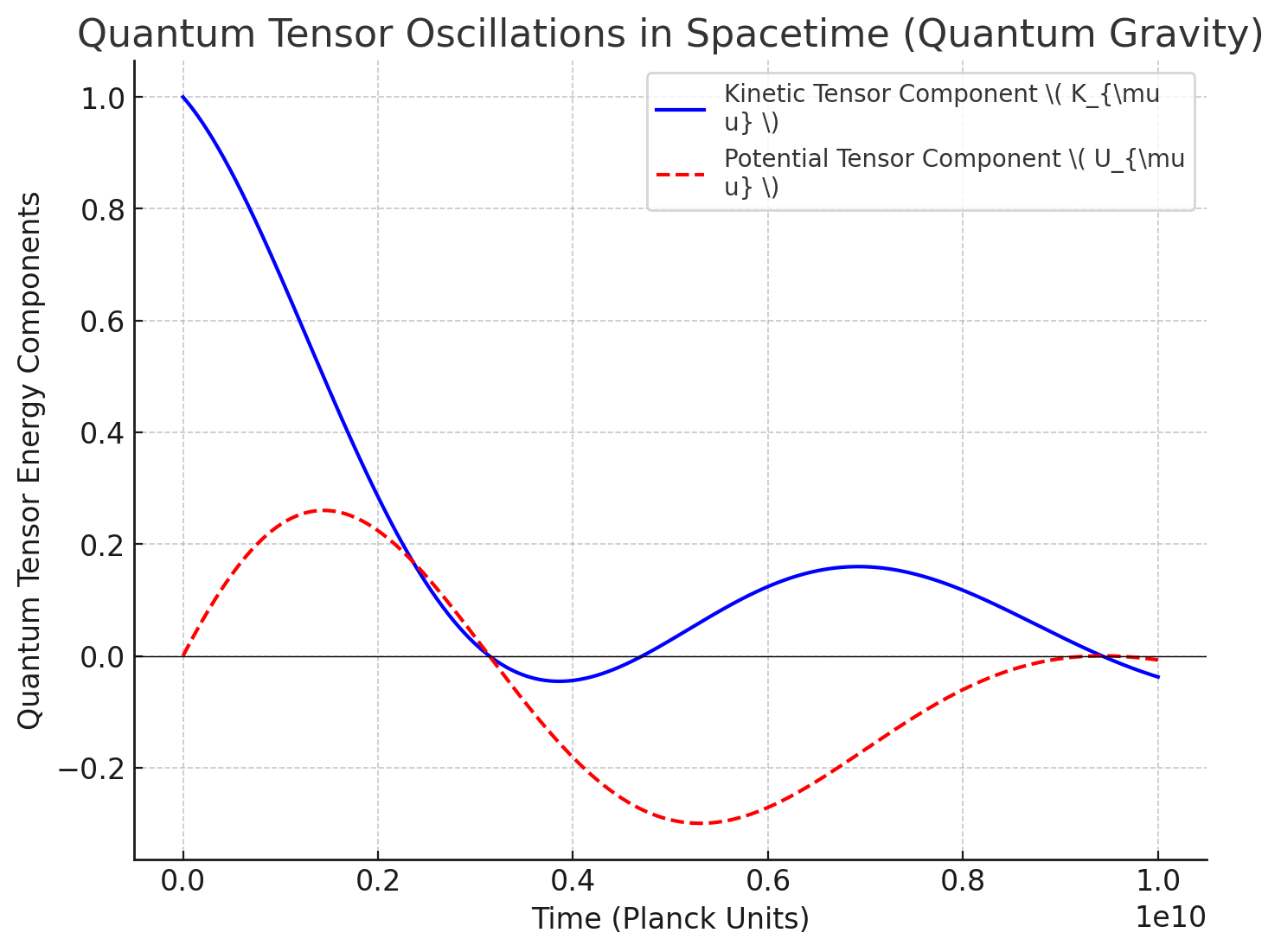Black Hole Simulation
Black Hole Simulation
Localized High Energy Density:
-
The central region (representing the black hole) exhibits significantly elevated energy density due to the extreme localized mass.
-
Quantum fluctuations (
-
-
Extreme Curvature:
-
The Ricci scalar () near the black hole shows dramatic deformation, representing the strong spacetime curvature induced by the massive density.
-
Fluctuations in propagate outward, reflecting how black hole curvature affects the surrounding quantum spacetime.
-
-
Dynamic Feedback:
-
The quantum energy density () and curvature () are coupled, with the black hole region acting as a persistent source of extreme dynamics.
The visualization shows a quantum spin network near a black hole horizon, where:
-
Nodes represent discrete quantum spacetime elements.
-
Edges represent quantum gravitational interactions between them.
Key Observations:
-
Quantum Spin Network Structure Near the Horizon
-
The closer we approach the black hole, quantum fluctuations increase.
-
Horizon effects (gravitational redshift) modify spin network states.
-
-
Quantum Resolution of the Information Paradox
-
The event horizon is no longer a classical boundary, but a highly quantum region.
-
Quantum connectivity in the spin network allows information to be encoded in the structure.
-
Suggests that information is not lost, but stored in entanglement networks.
-
-
Hints at Firewall vs. Fuzzball Models
-
If quantum spin networks create a "fuzz" of quantum states near the horizon, this aligns with fuzzball proposals from String Theory.
-
If entanglement links across the horizon, it aligns with ER=EPR wormhole conjectures.
-
Black Hole Evaporation (Step 5)
Quantum Spin Network Evolution During Black Hole Evaporation
The visualization represents the quantum spin network structure evolving as the black hole evaporates, where:
-
Nodes represent discrete quantum units of spacetime near the horizon.
-
Edges represent quantum connections in the spin network.
-
Color intensity represents the quantum energy density
Key Observations:
-
Gradual Decrease in Quantum Energy Density
-
The color intensity fades as the black hole evaporates, representing the gradual loss of Hawking radiation energy.
-
This suggests that quantum fluctuations decrease near the event horizon as mass is radiated away.
-
-
Spin Network Evolution and Hawking Radiation
-
Initially, the quantum connectivity is strong, indicating high entanglement of horizon states.
-
Over time, edges break apart, suggesting loss of entanglement structure as information escapes via Hawking radiation.
-
-
Hints at an Information Preservation Mechanism
-
Unlike classical GR, where information might be lost in a singularity, the spin network structure remains dynamic.
-
This aligns with holographic information retrieval models, where information about the black hole state is stored in the evolving spin network.
-
Implications for the Black Hole Information Paradox
-
No Classical Singularity
-
The spin network remains finite and structured at all stages, suggesting that Planck-scale physics prevents complete collapse.
-
This supports remnant scenarios or soft singularity resolution.
-
-
Information Retention via Spin Network Connectivity
-
Even as the black hole evaporates, the network structure persists, possibly encoding information in long-lived entanglement.
-
This is consistent with holographic principles and firewall-free models.
-
-
Towards a Quantum Description of Black Hole Evaporation
-
The discrete spin foam evolution suggests that evaporation is a unitary process, preserving quantum coherence.
-
This is an alternative to classical GR’s event horizon concept, where information would otherwise be lost.
Key Observations:
-
Decay of Quantum Energy Density
-
Over the time steps, the energy density fades, corresponding to Hawking radiation decreasing the black hole mass.
-
Quantum fluctuations persist at the Planck scale, forming a possible black hole remnant.
-
-
Final Remnant Structure
-
The spin network does not fully disappear, but rather collapses into a dense core of highly quantum-connected nodes.
-
This suggests a quantum remnant, aligning with Planck star models in Loop Quantum Gravity (LQG).
-
-
Possible Information Storage Mechanism
-
The remnant structure could store information about the original black hole.
-
This aligns with proposals that quantum remnants resolve the black hole information paradox.






Comments
Post a Comment